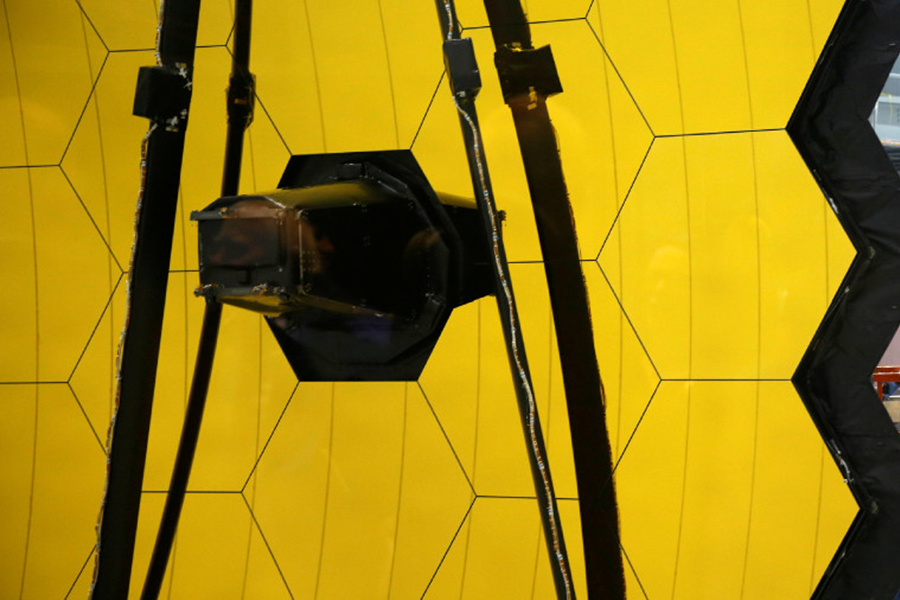Why the new James Webb telescope folds like origami
Loading...
For years, the Hubble telescope has delivered us fantastic and otherworldly images of the universe. Now, with Hubble’s tenure in the skies running out, the approximately $9 billion James Webb telescope is set to take its place.
With a launch date set for October 2018, the James Webb telescope will soon introduce the world to next-generation images of outer space. But with next-generation imaging power comes next-generation engineering – and telescope scientists say that the James Webb telescope will be something to behold.
The telescope is slated to be an engineering marvel: in order to fit inside the rocket that will launch it into space, it must fold up completely. The infrared telescope also features a folding shield to protect the vulnerable lens from the sun’s heat, since infrared telescopes must remain cold to work properly.
"That's like a big umbrella – beach umbrella – so, we keep that facing the sun and the Earth so it dissipates all the heat through all the layers," astrophysicist and systems engineer Begona Vila told NPR. "That allows all the instruments to cool to the temperatures that we need."
Approximately the size of a tennis court, the James Webb telescope’s sunshield must squeeze into a much smaller package. Other parts must be carefully engineered to fit into a compact space, as well.
NASA plans to launch the telescope from the European Spaceport near Kourou, French Guiana.
Over the course of the two weeks following launch, the telescope’s component parts will carefully unfurl and become functional, allowing astronomers to view some of the oldest stars and galaxies in the universe. The James Webb telescope will reach its final destination after approximately 30 days and one million miles of travel.
The Christian Science Monitor’s Zhai Yun Tan reported on the telescope’s progress earlier this month:
While its predecessor is credited with unveiling important discoveries including the acceleration of the universe’s expansion, the JWST is expected to go even further by exploring the birthplaces of planets, stars, and first galaxies born after the Big Bang more than 13.5 billion years ago with its sensitive infrared cameras. These observations will not only help scientists understand the origins of the universe but at the same time, look for signs of life in other planets.
"We'd like to know if another planet out there has enough water to have an ocean, and we think we can do that," Dr. Mather said on one of the project’s missions to explore the Alpha Centauri system, Popular Mechanics reports.
Although the project is designed to be groundbreaking, it has also long been a source of frustration at NASA. Despite going over budget and employing a massive crew of engineers and astronomers, the telescope project is behind schedule.
Failure at this point could be catastrophic, leaving the telescope useless.
"Yes, I think that scares all of us," Vila told NPR. "We do as much testing as we can."








